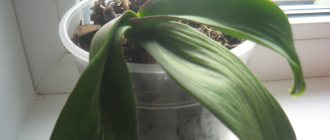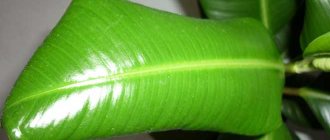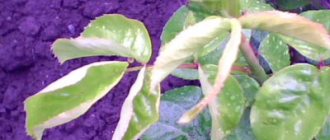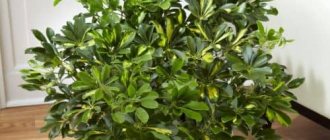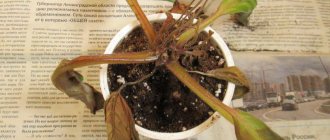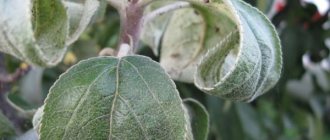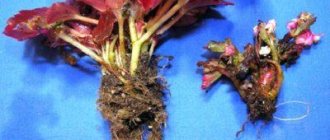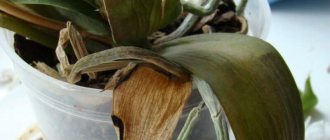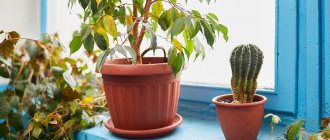Ways to grow gloxinia at home
There are various methods of propagation: by seeds, dividing the tuber and leaf cuttings.
Household members rarely sow seeds. The propagation method is fraught with difficulties. At the beginning of autumn, prepare a soil mixture based on peat, leaf soil and sand (1:1:1). The earth is scattered into low boxes. In November, seeds are sown, regularly watered with warm water. The sprouts appear after 2-3 weeks, when 2 leaves appear, they are picked, planted at intervals of 2 cm. The second picking is carried out when the third pair of leaves is formed - 5 cm. The distance between the grown seedlings is subsequently increased to 10 cm.
To propagate the crop by cuttings, it is recommended to immediately replant suitable leaves with a petiole of 1 cm in a soil mixture of sand and peat (1: 0.5). The shoot will need to be moistened and covered with a jar, ensuring the plant is ventilated daily, removing the jar for 15 minutes. After 2.5-3 weeks, tubers form on the cut ends placed in the ground. The shoots are planted in small pots, enjoying abundant flowering a few months after planting.
Tuberous propagation is considered the most dangerous method. The risk is achieved by the presence of rot in the roots; experienced gardeners carefully remove the affected areas before planting. When 2-centimeter shoots appear, the tubers are separated with a sharp blade, treating the sections with activated carbon. Individual pieces are planted in appropriate pots and watered 3 days after planting.
Propagation by cuttings
With proper care, gloxinia lives up to 10 years, pleasing the eye with colorful blooms. As the tropical plant ages, it produces more flowers. Sometimes the number of bells reaches 50 pieces.
Why do gloxinia leaves curl?
Gloxinia is a representative of the Gesneriaceae family and came to us from the distant forests of America. This is a perennial subshrub with beautiful decorative leaves, which also blooms very beautifully with velvet bells. The leaves themselves are also covered with a small pile, are oval or elongated, and have small teeth along the edges.
Usually gloxinia has even leaves, but sometimes gardeners are faced with a problem such as a change in the shape of the leaf plate. Externally, the plant remains healthy, the leaves retain their color, but the edges begin to curl under the bottom of the leaf, resembling an inverted spoon. Sometimes the lower leaves literally lie on the windowsill and seem to be trying to crawl under the pot.
The reasons why gloxinia leaves turn inward can be very diverse, because the flower is very sensitive to the slightest changes. Most often, this phenomenon occurs as a result of:
- violations of conditions of detention and care;
- when damaged by pests.
What do gloxinia leaves look like?
Gloxinia leaves are oval and dense. The outer surface is velvet, pleasant to the touch. The dark green color is covered with veins, giving the appearance of a pattern. In an adult plant, the leaves are slightly lowered.
What do gloxinia leaves look like?
For reference! The plant tends to curl its leaves before retiring. During this period, the leaves lose their shape and begin to dry out.
The main causes of leaf curling
Why do fuchsia leaves curl inward - what to do
If gloxinia leaves curl, you need to know what to do in such a situation, otherwise it can lead to a lack of color and death of the flower. The reasons can be varied and related to both improper care and the appearance of pests.
Main causes of the problem
Temperature
One of the reasons why gloxinia leaves turn inward may be an incorrectly selected room temperature.
Leaves may curl as a result of an increase or decrease in temperature. For growing crops, the optimal range is considered to be +19..+22 degrees. Any change leads to deformation.
Dry air
Another reason why gloxinia leaves curl and become deformed is excessively dry air.
Such problems occur most often in winter. Especially if the plant is grown on a windowsill near heating appliances. Often curled leaves begin to dry out and fall off. To treat such a plant, it is necessary to regularly spray with water.
Drafts
Frequent drafts can cause the leaf to become deformed and curl. The plant is very sensitive to sudden gusts of air. Therefore, it is necessary to place the pot in a protected place on the windowsill.
Attention! With frequent drafts, the plant begins to defend itself and curls its leaves.
Watering
If watered incorrectly, the leaves may curl. Also, another symptom of improper watering can be the appearance of dry spots.
Often during watering, water does not sufficiently moisten the soil in the pot and accumulates only in the top layer. After removing the plant from the container, you can notice a damaged tuber.
In order to prevent such a problem, it is necessary to place the pot on a tray of water. The plant will independently distribute the required amount of moisture for growth.
Sunburn
Direct sunlight on the leaves can cause leaves to curl. Gloxinia's leaves are very sensitive and in the summer it is necessary to shade the bush.
Also, when exposed to sunlight, dark spots may appear, which reduce the external decorative characteristics of the crop.
Negative effects of sunlight
Pests
Parasites can curl the leaves of a plant. Among the most frequently encountered pests, the following should be noted:
- The cyclomene mite is a small insect that most often settles on a bush and feeds on sap. After a plant is infected by a large number of mites, the leaves begin to curl. To combat insects, it is necessary to use the drug Actelik.
- Thrips - externally, the pest looks like a small compaction. Over time, light spots appear on the leaves of gloxinia. The leaves of the crop begin to curl and dry out. To combat thrips, it is necessary to use the Aktara insecticide.
Pests detected in a timely manner can be easily treated without harm to the crop.
Pests on Gloxinia
Problems with care
Gloxinia is a rather capricious plant; it reacts very sharply to almost any violation of the conditions of detention and this is primarily reflected in the leaves.
Leaves may begin to curl as a result of:
- The room temperature is too low or high. The optimal temperature regime for gloxinia should not go beyond 18-22 degrees Celsius.
- A sharp change in temperature, for example, if the plant is taken out to the balcony too early in the summer.
- Dry indoor air, especially in winter. In this case, you should spray the flower more often or place it on a tray with water.
- Lack of lighting. In addition to leaf curling, plate stretching may also occur.
- Excess light. Under direct rays, gloxinia not only curls up, but also becomes covered with unsightly burn spots.
By adjusting the conditions for keeping gloxinia, you can save the flower. Of course, it will no longer be possible to straighten the leaves, but new ones will grow absolutely healthy and normal.
Step-by-step instructions for growing a flower from a leaf
To root gloxinia in water you need:
- cut a young healthy leaf from a mature plant;
- Pour chilled boiled water into a transparent glass, place a leaf there so that only the lower part of the cutting is in the water;
- cover the cup with the leaf with a transparent plastic bag and place in a warm, well-lit place;
- Once a day, the greenhouse should be ventilated by removing the bag from the glass for a few minutes, while monitoring the water level in the glass and adding it if necessary.
It is necessary to cut a leaf from the mother plant with a sharp, sterile blade or razor.
To root gloxinia in the ground you need:
- cut off a young leaf from a healthy plant;
- make drainage holes in a plastic cup and pour ready-made soil into it - this could be a mixture for violets;
- moisten the substrate and place the leaf in it at an angle of 45 degrees, having previously sprinkled the cut of the cutting with a powdered root growth stimulator; the cutting must be powdered with “Kornevin” no higher than 1 cm from the cut;
- you can place the leaf in clean vermiculite or a peat tablet, which should be soaked in water in advance;
- Cover the glass with the cuttings with a transparent bag and place in a warm, well-lit place;
- Ventilate the greenhouse once a day, removing the bag for a few minutes;
- water the soil as it dries.
Good to know. Gloxinia can be rooted not only with a whole leaf, but also with fragments of it, by cutting the leaf along the veins into several parts with a sharp blade.
From the video you will learn how to propagate gloxinia by leaf:
Step-by-step instructions for growing gloxinia from seeds
Gloxinia from seeds at home grows no worse than adult plants that are sold in flower shops. But one of the main problems is that not all seeds usually germinate.
How to prepare the soil for planting
The first thing to do is select the soil. Seeds can be sown in ready-made soil mixture, or you can prepare it yourself.
The right soil for gloxinia:
- earth (it is best if it is collected from an area under a birch or pine tree);
- peat soil;
- fine drainage (expanded clay or small pebbles are suitable)
Mix all ingredients to obtain a homogeneous mass. Pour drainage into the bottom of the container, and then fill with soil. Before planting the planting material, the soil is calcined in the microwave or oven for 1 hour. Thanks to this measure, all harmful microorganisms will be destroyed. Instead of the usual substrate, you can grow seedlings in peat tablets.
Advice! To make the soil more nutritious, you need to add a little wood ash to the soil mixture.
Step by step landing procedure
The most important part of growing gloxinia at home is sowing the seeds. Before gloxinia is planted with seeds, the soil is sprayed with a spray bottle. It should be a little damp.
Sowing seeds
Then the seeds are scattered on the surface. You can sprinkle them with a thin layer of soil. The main condition is that the planting material cannot be buried.
Important! Cover the containers with cling film or glass and put them in a warm, sunny place. The glass must be removed regularly to allow the soil to breathe. If you don’t do this, the soil will begin to become moldy, and then nothing will grow.
As the soil dries, water it with warm, settled water. When the first sprouts appear, the glass is immediately removed. If you do not remove it and leave the container in the sun, the sprouts will get burned and die immediately
If you don’t do this, the soil will begin to become moldy, and then nothing will grow. As the soil dries, water it with warm, settled water. When the first sprouts appear, the glass is immediately removed. If you do not remove it and leave the container in the sun, the sprouts will get burned and die immediately
The glass must be removed regularly to allow the soil to breathe. If you don’t do this, the soil will begin to become moldy, and then nothing will grow. As the soil dries, water it with warm, settled water. When the first sprouts appear, the glass is immediately removed. If you do not remove it and leave the container in the sun, the sprouts will get burned and die immediately.
Sprouts should appear 14-90 days after sowing. If more than three months have passed and the seeds have not yet hatched, then the planting material has been spoiled and nothing will sprout.
Watering rules and humidity
When growing gloxinia at home, special attention should be paid to humidity and watering. Frequent overdrying of the soil, as well as its constant waterlogging, negatively affects seedlings. It either may not rise at all, or will quickly die.
It either may not rise at all, or will quickly die.
In order to properly grow seedlings, you must always monitor the soil. As soon as it dries, you need to water it again, but do not allow it to become waterlogged. It is enough that the top layer of the substrate is moistened.
What do seedlings look like?
Why do gloxinia leaves curl?
Gloxinia is a representative of the Gesneriaceae family and came to us from the distant forests of America. This is a perennial subshrub with beautiful decorative leaves, which also blooms very beautifully with velvet bells. The leaves themselves are also covered with a small pile, are oval or elongated, and have small teeth along the edges.
Usually gloxinia has even leaves, but sometimes gardeners are faced with a problem such as a change in the shape of the leaf plate. Externally, the plant remains healthy, the leaves retain their color, but the edges begin to curl under the bottom of the leaf, resembling an inverted spoon. Sometimes the lower leaves literally lie on the windowsill and seem to be trying to crawl under the pot.
The reasons why gloxinia leaves turn inward can be very diverse, because the flower is very sensitive to the slightest changes. Most often, this phenomenon occurs as a result of:
- violations of conditions of detention and care;
- when damaged by pests.
Errors in care
Gloxinia leaves curl if:
The room is too hot or cold. The optimal temperature for growing a forest beauty should be between 18-22 degrees Celsius. If the room is cold in winter and hot in summer, the leaves will react first
It is important to choose a place for the plant where it would be comfortable all year round or, depending on the season, move the pot to a more suitable room (warm or cool). The air in the room is too dry. By its nature, gloxinia simply loves high air humidity.
In a dry room, the leaves do not have enough nutrition and they curl up. It is especially important to monitor humidity in hot summers, as well as in winter (when the heating is on). At this time, it is recommended to place a container of water near the gloxinia, and also spray it periodically. The flower was caught in a draft. Ventilation of the room is a necessary condition when growing gloxinia, provided that drafts are avoided. The plant is on a south-facing windowsill. Direct sunlight is harmful to gloxinia, so in the summer it needs to be rearranged or the window shaded. Gloxinia was flooded. Excess moisture negatively affects the appearance of the flower, and in the case of constant overflow, it can lead not only to curling of the leaves, but also to rotting of the plant.
Unfortunately, it will not be possible to return the leaves to their previous shape, but provided that all care rules are followed, over time gloxinia will grow new, beautiful leaves, and the old ones can be cut off.
Presence of pests
Gloxinia leaves curl if thrips or mites have settled on them. In this case, it is necessary to urgently take action and treat the plant with insecticides (Aktara, Karbofos), otherwise it may die.
about proper care of gloxinia
Gloxinia is a beautifully flowering indoor plant that looks decorative even without flowers, only due to its large, slightly pubescent leaves. But sometimes its leaves curl inward, why does this happen, how dangerous is it for the plant, and what needs to be done to stop this process?
Gloxinia's leaves are a kind of indicator that immediately conveys its condition and mood. It’s a pity that the exact answer to the question of why they curl is not written on the leaves.
If gloxinia's leaves curl, it means that it does not like something in the care and conditions that you have created for it.
The flower will feel uncomfortable in a draft or in a room with a low temperature; temperature changes also have a negative effect on it.
The normal temperature for gloxinia ranges from 18 to 22 degrees; if these values are higher or lower, the leaves of gloxinia will curl.
Gloxinia loves fresh air, so the room in which it grows must be ventilated. During ventilation, the flower is taken out so as not to expose it to stress from drafts.
Gloxinia leaves also curl due to low air humidity. This plant loves high humidity, so in the hot summer or during the heating season the air needs to be additionally humidified.
This can include spraying the leaves of the plant, or increasing the humidity around the flower using household humidifiers. The easiest way to increase air humidity is to place a glass of water next to the flower.
Gloxinia grows very poorly, its flowers curl
If gloxinia grows too slowly, or gloxinia flowers curl, it is possible that the plant was overwintered too cold, or the plant is flooded, or the temperature in the room where gloxinia grows is too low, or there are drafts. Perhaps the land is very poor and there is not enough food. Treat against pests. They can also inhibit the growth of gloxinia.
Curling of gloxinia leaves is possible if the room is too dry and hot. However, even if the air humidity is too high or the soil is excessively waterlogged, gloxinia leaves also curl, bend, short stalks form, or the formation of deformed flowers is observed. Adjust watering of gloxinias.
Other ailments
Viroses
The carriers of these viral diseases are most often insect pests. The plant's resistance to infections decreases and seed germination decreases. This problem can manifest itself in different ways: chlorotic spots on leaves, streaks of different lengths on stems and flowers, rotting roots. Unfortunately, viral diseases cannot be cured at the moment.
. The plant will have to be destroyed.
Viruses do not reproduce outside living cells, but retain their virulence for a long time. They are superior to bacterial and fungal diseases in terms of harmfulness.
The affected plant can live for a long time, this is the peculiarity of the disease.
Bacteriosis
The pathogen is transmitted through damage that is sometimes invisible to the eye. It can end up in the owner's green corner along with poor quality soil, an untreated pot or other equipment.
With bacteriosis, mucous spots appear on the leaves of gloxinia, and growths appear on the stem and roots. Bacteriosis cannot be treated.
Basic rules of prevention
:
- disinfection of tools, soil and planting containers;
- treatment of fresh wounds on the plant when treated with charcoal;
- use of immunostimulants: Epin and Zircon.
Gloxinia did not wake up after wintering
The storage area for gloxinia tubers should be cool and dark. If the gloxinia tuber is mature and healthy, then as soon as you put it in the light and water it little by little, shoots begin to grow. Sometimes gloxinia wakes up on its own, and when you take it out into the light, it already has a shoot. However, in practice it does not always work out as it should.
Gloxinia does not wake up on time due to the fact that the rest period was too short, less than 4 months. It is quite possible that the winter was too dry and the tuber dried out. But in any case, gloxinia wakes up on its own. It just takes patience.
To avoid overdrying of the tuber, pots with gloxinia in winter should sometimes be lightly watered or sprinkled with water. Or you can place gloxinia tubers in plastic bags, adding a little soil or damp moss. Close the bags or seal them tightly. The bag will maintain constant moisture, and due to the fact that the bag is transparent, you will have the opportunity to observe the gloxinia tubers in winter. At the first appearance of leaves, you can immediately plant gloxinia in a pot.
If gloxinia does not wake up after wintering, it means that the gloxinia was sent to wintering too young, which did not have time to form a tuber, or the tuber has rotted.
If a gloxinia tuber was purchased in a store and it did not wake up from hibernation after last year’s flowering, it is possible that the tuber was sold of very low quality. Many gardeners complain about this problem. Outwardly, the tubers look quite safe, but in reality it may turn out that they are already old, or infected with some kind of infection or pests. The strength of such tubers is only enough to bloom for one season.
Dig up the tuber, examine it: if it is very wrinkled, then most likely it is lost. Break or cut it: the tuber should be slightly yellowish or pinkish when cut. If this is the case, then dry the sections, sprinkle with crushed coal, you can treat them with regular brilliant green or fucorcin (raspberry liquid, a strong antiseptic, has an antifungal effect, sold in pharmacies). You can treat the tuber with epin or zircon to increase the vitality of the tuber and stimulate it to form shoots.
If the gloxinia tuber is brown on the cut, then most likely it is gone. If the brown color is only on one edge, cut off all the rot, treat the tuber as described above and plant in new soil.
If you want the purchased tubers to be able to survive the winter without problems, then immediately after purchasing gloxinia tubers at home, treat all planting material in a solution of potassium permanganate or phytosporin. This treatment is aimed at preserving gloxinia tubers from rot.
The next step is to treat the gloxinia tubers with Actellik or Fitoverm. These drugs will help get rid of thrips, spider mites and other pests of indoor plants.
If you purchased gloxinia in a pot, change the soil and treat the tuber. The soil that is sold in pots along with plants is very poor.
Perhaps the tuber is already old and has simply died. Gloxinias live for three to four years. If you really value this particular variety of gloxinia, try to root a cutting or leaf in advance.
Fungal diseases of gloxinia leaves and their treatment
More often than others, gloxinias are attracted to late blight fungi. Leaf disease on gloxinia appears as brownish-brown spots on the greenery, petioles and stems. In dry air, the affected areas quickly dry out, the leaves, and then the entire above-ground part die. With increased humidity, the tissues under the fungus rot, soften and also die.
Treatment of late blight rarely produces positive results, and the resilient fungus can remain active for several years
Therefore, it is important to prevent the onset of the disease by directing all efforts to prevention.
- All purchased tubers are treated with fungicides before planting.
- The soil for planting is heated in the oven.
- Gloxinia plants and the soil under them are sprayed with a solution of fingicide or phytosporin several times a year.
The same measures are effective in treating gloxinia with leaf diseases caused by other fungi. Such diseases include:
- true and downy mildew;
- anthracnose;
- axochytosis;
- septoria and other infections.
Indoor plants are at greatest risk of infection if safety precautions are not followed during planting, if they are kept outdoors in the summer, or if they are carelessly taken care of.
Gloxinia pests and their control
The most dangerous enemies of gloxinia are thrips and microscopic mites. In the first case, small grayish-brown spots appear on the leaves. The edges of the leaf plates curl and dry out. The shape of buds, stems and other parts of the plant changes ugly. In addition to repeated treatment with insecticides, it is useful to replant gloxinia by washing the tuber in a solution of potassium permanganate.
The reasons for the appearance of pests and diseases of gloxinia lie in care errors. In dry air and improper watering, spider mites and cyclamen mites appear on the leaves. Reproducing quickly, these parasites capture and oppress gloxinia and other indoor flowers. Mite colonies look like a dusty coating. And vital activity causes oppression of shoots, the plant refuses to bloom. To defeat dangerous pests, acaricides and insecticides are used, and they must take regular care of green pets.
Fungal diseases of gloxinia
Why not? This question plagues many gardeners. Gloxinias often become ill with various fungal diseases, in which the natural color of the leaves disappears and parts of the plant turn black. If the buds of a plant begin to rot, you can find several reasons for this problem:
- excessive watering;
- acidic soil;
- excess nitrogen.
When watering abundantly, it is enough to adjust it so that the soil is not excessively wet. If the soil is acidic, you need to replant the plant with a complete replacement of the soil. Excessive nitrogen levels may occur after the application of nitrogen-containing fertilizers. It is better to feed with complex fertilizers for gloxinia. They necessarily contain nitrogen and potassium. In addition to these elements, complex fertilizers contain phosphorus and many other chemicals. If a wisteria tuber rots, you need to spray the plants with fungicide 2-3 times.
Why isn't gloxinia blooming yet? Among diseases of fungal origin, anthracnose deserves special mention. Its symptoms are brown spots on the leaves. They gradually move onto the shoots and onto the trunk of the plant. Ultimately this leads to their rotting and destruction. Anthracnose in gloxinia must be treated without fail. This disease can attack plants with mechanical damage. Increased air humidity and soil acidity, a lack of phosphorus and potassium can also provoke the disease.
To prevent pathology, complex care is required: you need to spray the plant with copper oxychloride, cuproxate or oxychrome and feed it with fertilizers. Otherwise, with the help of working equipment and with the help of various pests, the disease will spread to neighboring plants. Sick specimens should not be placed outside during rain. All work equipment should be disinfected after use. If the infection of the plant is very severe, then it is better to destroy the flower by burning it. The initial stage of this disease is eliminated. Treatment is as follows:
- you just need to remove the diseased parts of flowers with brown spots (leaves, stems, buds);
- spray the plant with fungicide 2-3 times with an interval of 2-3 weeks.
Another disease is ascochytaosis. Its signs are the appearance of red spots with brown rims on the leaves of the plant. The spots may also have a brown color. This can happen when air humidity increases. For treatment you need:
- completely remove all leaves affected by spots;
- to prevent the spread of infection, it is better to burn them;
- treat a diseased plant;
- After 7-10 days, repeat the treatment.
Instead of Bordeaux mixture, you can use copper sulfate, fungicides such as Abiga-Pik or Vectra.
Phyllosticosis is a fairly common disease. Dark round spots appear on the leaves. Their middle is brown. The leaf grows and breaks appear where spots appear. When these signs appear, you should immediately spray the diseased plant. Treatment of gloxinia consists of treating them with preparations containing copper. This may be Bordeaux mixture, copper sulfate or copper oxychloride.
Types of diseases and their photos
Brown spots
The appearance of brown spots on gloxinias indicates diseases such as anthracnose or ascochyta blight.
Anthracnose
A fungal disease, the signs of which can only be seen if there are brown spots on the surface of the leaves. Gradually they begin to attack the shoots and trunk of the entire plant, which leads to their rotting and death. The reasons for the appearance of anthractosis in gloxinia are damage or the presence of improper care.
Attention! This fungus is transmitted by pests, equipment or precipitation. To eliminate the spread of the disease on other plants, they should be treated with a fungicide 3-4 times at intervals of several weeks.
Prevention: it is necessary to spray with drugs: oxych, cuproxate, copper chloroxide. After using tools, they must be disinfected immediately to prevent further infection.
Ascochyta blight
A fungal disease, the signs of which can also be seen only in the presence of red or brown spots with a brown edging on the leaves. The main cause of this disease is high humidity in the room.
To save gloxinia from ascochyta blight you need:
- Remove affected leaves immediately.
- Then you need to spray the synningia with Bordeaux mixture, copper sulfate or the following fungicides: Vectra, Abigapik.
- After a week, repeat the procedure.
Wither
Gloxinia leaves wither due to a plant disease such as fusarium. Due to lack of water and high air humidity, plants can develop such a disease.
Important! Fusarium is a fungal disease that enters a flower through an infected substrate. The leaves gradually begin to wither, curl and acquire a pale brown tint.
- To combat this disease, gloxinia should be removed from the pot and freed from the soil.
- Then treat with fungicides: Topaz and Fudnazol.
- And at the very end, the plant must be planted in new soil.
Why do they curl?
Let's look at why gloxinia leaves curl. This occurs due to an improper irrigation system. If a plant receives too much water, its leaves begin to curl in the shape of a so-called spoon. A way to combat such a disease may be to establish watering. Before the next watering, the top layer of soil must dry out. Another reason why leaves curl is insufficient air humidity or too high a temperature. Then you need to place a vessel with wet expanded clay near the pot and reduce the air temperature.
Turn yellow
Chlorosis
A disease that occurs when the soil acidity is low, which is a consequence of watering the plant with too hard water (what kind of soil is needed for gloxinia?). The disease can be identified by external signs by yellow spots on the leaves of gloxinia.
Note: To cure a plant, it must be replanted and irrigated only with soft, warm water. To replant, you need to take a light and acidic substrate that can allow air to pass through to the root system of the plant.
rust mushroom
If bubbles of various colors appear inside the gloxinia leaf, we can speak with certainty about this plant disease. The reason for its appearance may be insufficiently good care, keeping it in a damp and too cold room (read about the peculiarities of growing gloxinia and caring for it here). In order to combat this disease, it is necessary to remove all damaged parts of the flower and provide high-quality care for the “tropicana”. For prevention, spraying with colloidal sulfur should be carried out.
Turn black
The cause of this disease may be the appearance of gray rot. The causative agent of the black parasite can be the increased humidity of the soil in the pot.
To treat a plant you need:
- Remove the bush and examine it carefully.
- If there are damaged parts of the tuber and above-ground elements, remove them.
- Treat the remaining healthy parts with Topaz or Fundazol.
- Then you should transplant the recovered plant into new high-quality soil (read about how to transplant gloxinia and its cultivation here).
Brown dots
Those ugly brown dry spots can be caused by gray mold. This disease can be cured as follows: cut off the infected areas of gloxinia and treat the entire plant with a fungicide. Another reason for the appearance of such spots may be sunburn, which occurs on the leaves of the plant when it is exposed to the bright rays of the sun. Brown spots also form on the leaves if they are exposed to excess water.
Be sure to water the flower very carefully, along the edge of the pot. Such characteristic spots also indicate a plant disease such as thrips, which leave brown spots in the form of a thin mesh. You can cure a plant from thrips like this: watering and spraying with Actellik, after 10 days you need to repeat the procedure, the treatment should be carried out 2-3 times.
Drying
If the leaves of gloxinia begin to dry, especially the lower ones, then the reasons may be factors such as insufficient air humidity or flooding with water. To eliminate this disease, it is necessary to treat with Fungicide or Fitosporin.
Prevention - what to do
Why do gloxinia leaves curl, what should I do to prevent the problem? The answer to this question lies in proper prevention. When caring for a plant, you should adhere to the following rules:
- Watering the bush after the soil has begun to dry out will reduce the risk of rot. However, watering should be carried out during the flowering period at least once every 4 days.
- Every year, replant the tuber in new soil. Such actions strengthen the plant and saturate the tuber with useful elements.
- In summer, move the flower pot to the shade.
- Feed the plant with complex fertilizers to form stable immunity.
Prevention in the process of growing gloxinia
It is also necessary to carefully examine the leaves of the bush for changes. Once a week, wipe the indoor plant with damp cotton wool.
Growing gloxinia is not difficult. In order to get a plant that blooms for a long period, you need to follow simple care methods and choose the right location for the flower pot.
Prevention
Preventative measures are the best way to avoid problems in growing a flower.
Why do gloxinia leaves curl and what to do in this case:
- sunburn. After buying a flower, place it on the western windows, not on the southern ones;
- overflow Before watering, you need to check the dryness of the soil with your finger;
- drafts. You need to put the pot in a warm place while airing;
- temperature. Adjust the temperature immediately after purchasing the flower.
Important! Another important preventative measure is regular fertilization, which helps avoid the occurrence of diseases. Although gloxinia is considered a demanding plant, caring for the flower is not so difficult
The main thing is to adhere to the basic rules
Although gloxinia is considered a demanding plant, caring for the flower is not so difficult. The main thing is to adhere to the basic rules.
vote
Article Rating
Why do gloxinia leaves curl?
Gloxinia is a beautifully flowering indoor plant that looks decorative even without flowers, only due to its large, slightly pubescent leaves. But sometimes its leaves curl inward, why does this happen, how dangerous is it for the plant, and what needs to be done to stop this process?
Gloxinia's leaves are a kind of indicator that immediately conveys its condition and mood. It’s a pity that the exact answer to the question of why they curl is not written on the leaves.
If gloxinia's leaves curl, it means that it does not like something in the care and conditions that you have created for it. The flower will feel uncomfortable in a draft or in a room with a low temperature; temperature changes also have a negative effect on it. The normal temperature for gloxinia ranges from 18 to 22 degrees; if these values are higher or lower, the leaves of gloxinia will curl.
Gloxinia loves fresh air, so the room in which it grows must be ventilated. During ventilation, the flower is taken out so as not to expose it to stress from drafts.
Gloxinia leaves also curl due to low air humidity. This plant loves high humidity, so in the hot summer or during the heating season the air needs to be additionally humidified. This can include spraying the leaves of the plant, or increasing the humidity around the flower using household humidifiers. The easiest way to increase air humidity is to place a glass of water next to the flower.
If in summer a pot of gloxinia is placed on a windowsill on the south side, you should not be surprised that its leaves curl. Direct rays of the sun in summer are especially harmful. To create more comfortable conditions for the plant, you should move the pot deeper into the room or simply shade the window with foil. Surprisingly, even with a lack of light, gloxinia experiences the same problems with leaves.
Pests
Why do gloxinia leaves curl and yellow or brown spots appear on them? Perhaps this is due to the fact that insect pests have settled on the flower. These could be mites or thrips.
One of the pests of gloxinia is the cyclamen mite, this is a very small insect that cannot be seen with the naked eye; sometimes colonies of mites look like accumulations of dust. Mites settle on the underside of leaves and feed on their sap.
When infected by the cyclamen mite, the leaves begin to deform, their edges curl, the stem also twists, the buds wither and fall off.
Gloxinia and spider mites cause no less harm. It is small in size, and without optical instruments it can only be seen due to its orange or red color. When a plant is infected with a spider mite, the leaves do not curl, but yellow-brown spots form on them, which gradually grow and cause the leaf and then the entire plant to die.
Gloxinia leaves curl even if it is occupied by thrips - small insects that suck juice from leaves, petioles and flowers. Thrips make themselves known by light dots and spots on the leaves, the upper side of the leaf blade becomes gray-brown and begins to dry, and brown spots appear on the underside of the leaf.
Gloxinia affected by pests is treated with insecticides - Karbofos, Decis, Karate, Intavir, Actellik, Aktara. When processing, try to spray the leaves from all sides, because most often insects settle on their underside. Treatment is carried out 2-3 times at intervals of 7-10 days.
https://youtube.com/watch?v=Mrebu9lhlwI
How to make it bloom at home?
Why doesn’t the plant bloom, but produces buds, which then dry up, and what should I do? There are several reasons why this problem occurs. It is necessary to eliminate them and create the right conditions for the plant.
Let's consider the most effective solutions:
How to feed gloxinia for abundant flowering? Any complex, preferably in liquid form, mineral fertilizer intended for flowering plants. Do it 3 times a month, starting two weeks after spring planting. Young seedlings begin to be fed when new shoots with leaves appear. Feed until autumn. If you don’t have fertilizer on hand, water the flower with an ash solution. Give more light! Gloxinia loves sunlight very much; it needs 12-14 hours of daylight in order to produce flower stalks. In the spring it is necessary to provide additional light to the plant. To do this, use phyto-lamps, or fluorescent lamps with suitable characteristics.
Plant it in a suitable pot! If gloxinia is in a container that is too spacious, it will not bloom. A wide and low pot of small volume is needed (you can read more about what size pot is needed for the healthy development of gloxinia in this material). The soil in the pot should be slightly larger in volume than the tuber itself (and you can find out more about how to choose the best soil for gloxinia here). Be careful with nitrogen! If your gloxinia has thick leaves and dark green stems. There are a lot of leaves, so it is possible that there is nitrogen overfeeding. Either there is too much humus in the soil, or the wrong fertilizers with a high percentage of nitrogen were chosen. Or both. This can only be corrected by replanting the flower in poor soil with a high peat content (you can read more about replanting gloxinia here). Feed only the right fertilizers and in accordance with the instructions. Are you warm, girl? If the room where the gloxinia pot is located is cool, then flowering will not occur. It is necessary to keep it at a temperature of 20 to 25 degrees. This should also include the presence of drafts and a cold window sill, from which the soil in the pot has a low temperature. The radiator is the enemy of plants! During the heating season, plants may suffer from too low humidity; hot, dry air rises from the radiators directly to the plants on the windowsill. Build a protective screen, or create humid air around the flower. You can put a tray with water, or spray water into the air from a spray bottle. Just don’t touch the flower under any circumstances! Did you rest or not? In winter, gloxinia should rest for 4 months. The tuber is dug up and stored in a cool, dark place, in a bag with slightly damp sand. If the rest did not last long, or the conditions were not right, then the plant will not be able to fully bloom. In the case of young plants that have not yet grown a tuber, it is left in the pot. But they also put it in a dark place with a temperature of 12-15 degrees
It is important not to allow the soil to dry out during this period. It is unlikely that it will be possible to force a plant to bloom in case of inadequate rest.
Why there are no buds: causes and diseases and what to do
- Why does the plant not produce buds or flowers appear that then dry up?
- Old tuber. More abundant watering is required. You can take care of propagation to get a young plant from this gloxinia.
- Infections affecting the tuber. Remove the tuber from the ground. Treat with fungicides. You can dip the tuber in a weak solution of potassium permanganate for half an hour. Dry. Prepare a new pot and fresh substrate. Disinfect the soil: bake in the oven for half an hour. Let it cool. You can use the drug Maxim: one ampoule per two liters of water. Plant the tuber in new soil.
- Soil contamination by pests. Treat the plant and the substrate itself with systemic insecticides.
- Lack of light at high air temperatures. Gloxinia stretches greatly, becomes thin and weak. Find a bright and warm place in the house for the flower. The lack of light can be compensated with the help of fluorescent lamps. During the heating season, gloxinia should be removed away from hot radiators.
- Unbalanced input of fertilizers: use of inappropriate compounds, deficiency of certain nutrients, excess of fertilizers. Signs of excess nitrogen are thick stems and a large number of new dark green leaves. It is necessary to transplant gloxinia into soil containing a lot of peat. Choose only the right fertilizers and set up a feeding schedule. Follow the dosage indicated on the drug packaging.
- Inappropriate temperature conditions. In high temperature conditions, the tuber overheats greatly. Gloxinia stops its development, the leaves become lethargic. Move the plant to a more shaded place, providing lighting if necessary. Temperatures below +18°C during the growing season slow down plant growth. The roots become overcooled and rot, the leaves turn black. You need to choose a warmer place for gloxinia.
- Air humidity is too low. The leaves turn yellow and curl into tubes (possible diseases of gloxinia leaves are described here). Use a spray bottle to spray the air around the plant, avoiding moisture getting on the leaves and stems. Place the pot of gloxinia on a tray with wet pebbles.
- Excessively large pot. Gloxinia spends all its energy on the growth of the tuber. Plant the plant in a shallow and wide pot (this material describes how to choose the right pot).
Caring for gloxinia is a process that requires a lot of attention and effort. At each stage of development, it is necessary to create optimal conditions for the plant. If everything is done correctly, gloxinia will bloom profusely all summer with a short break.
Why do gloxinia buds dry out without blooming and fall off?
Most often, the problem why gloxinia buds dry out without blooming lies in improper care. After all, if they appeared, it means that an obstacle to their further development appeared later. For example, there is a lack of nutrients, so be sure to feed the flowers in the summer. Buds usually appear at the end of March, and if in winter gloxinia was forgotten somewhere in the shade, a beautiful head of flowers is out of the question. During hibernation, it should not be left without regular watering and sunlight, as it must gain strength.
You can reanimate flowering using the following scheme of actions:
- Increase the humidity in the room (for example, turn on a humidifier).
- Ventilate the room, avoiding drafts.
- Place the flower on the eastern windowsill.
- Fertilize with phosphorus-potassium fertilizer.
- The soil after watering should be loose and slightly moist.
- Plant in another pot.
The appearance of a gloxinia bud
Dry soil, pests, stale air in the room and low humidity may also be causes. Among fertilizers, preference should be given to phosphorus-potassium fertilizers without nitrogen. It is the gradual correction of these factors that is the answer to gardeners’ worries about what to do if gloxinia’s buds dry out.
Gloxinia grows very poorly, its flowers curl
If gloxinia grows too slowly, or gloxinia flowers curl, it is possible that the plant was overwintered too cold, or the plant is flooded, or the temperature in the room where gloxinia grows is too low, or there are drafts. Perhaps the land is very poor and there is not enough food. Treat against pests. They can also inhibit the growth of gloxinia.
Curling of gloxinia leaves is possible if the room is too dry and hot. However, even if the air humidity is too high or the soil is excessively waterlogged, gloxinia leaves also curl, bend, short stalks form, or the formation of deformed flowers is observed. Adjust watering of gloxinias.
Diseases caused by improper care
Elongated stem
It happens that the stem of gloxinia becomes very elongated. This is possible for two main reasons. The first reason is poor lighting. Gloxinia is a light-loving plant and when there is a lack of light, it begins to lengthen the stem. If you notice such changes, move the flower to a more illuminated place. Sometimes the stem becomes elongated in plants that have not gone on vacation. In this case, it is advisable to prune. Otherwise, elongated shoots will not produce beautiful and long flowering.
The second reason is the characteristics of the variety. There's nothing you can do about it, but you need to carefully monitor the lighting. The varietal elongation may hide a lack of light, which will affect the splendor of the flowers.
Slow growth
For good health and normal growth of gloxinia, you need to transplant it into a fresh substrate. There are not enough nutrients in old soil for good growth. Over time, the soil clod gets lost and interferes with the normal growth of the root system. The soil does not dry out well and as a result the tubers rot. It is necessary to replace the soil with fresh one. In this case, it is better to do a complete replacement rather than transshipment. It is advisable to carry out the procedure at least once a year.
Slow growth can be caused by a lack of fertilizer. It is better to apply fertilizer to an already watered flower to avoid burning the roots. You should not apply fertilizers to fresh substrate for about a month, this will cause damage to the flower due to excess substances.
Pests can inhibit flower growth. It is necessary to conduct an inspection and take action if necessary.
Leaves curl, dry out, turn yellow
If the leaves begin to curl, you should pay attention to the temperature. Another common cause of the disease can be overfeeding with fertilizers.
The leaf grows unevenly and some parts lag behind, which leads to curling. It would be a good idea to check for pests.
Another common cause of the disease can be overfeeding with fertilizers. The leaf grows unevenly and some parts lag behind, which leads to curling. It would be a good idea to check for pests.
Wilting mainly occurs from improper watering. Leaves wither from excess moisture or lack of it. The plant should not be watered at high temperatures, as this will cause the roots to rot and rot, and the leaves and buds to wither. In this case, watering is carried out in the evening, when the main heat has subsided.
If the plant has not been watered for a long time, the leaves will let you know about it. Watering is carried out with water at room temperature. In this case, after a few hours the leaves will return to normal. If the problem cannot be solved by proper watering, you should inspect the tuber. It may be necessary to renew the plant if the tuber is rotting.
Due to too much watering, the buds and stems turn black and rot. This is a good environment for the appearance of fungal diseases.
Yellow leaves indicate many problems. Old leaves turn yellow and fall off - this is normal. If the plant comes into contact with direct sunlight, the leaves burn and turn yellow. If there is an excess of fertilizers, the roots burn and die, as a result of which the leaves turn yellow and dry. In this case, the plant may die. Because of hard water, the acidity of the soil decreases, which leads to yellowing of the leaves. The problem will be solved by transplanting into a new substrate.
